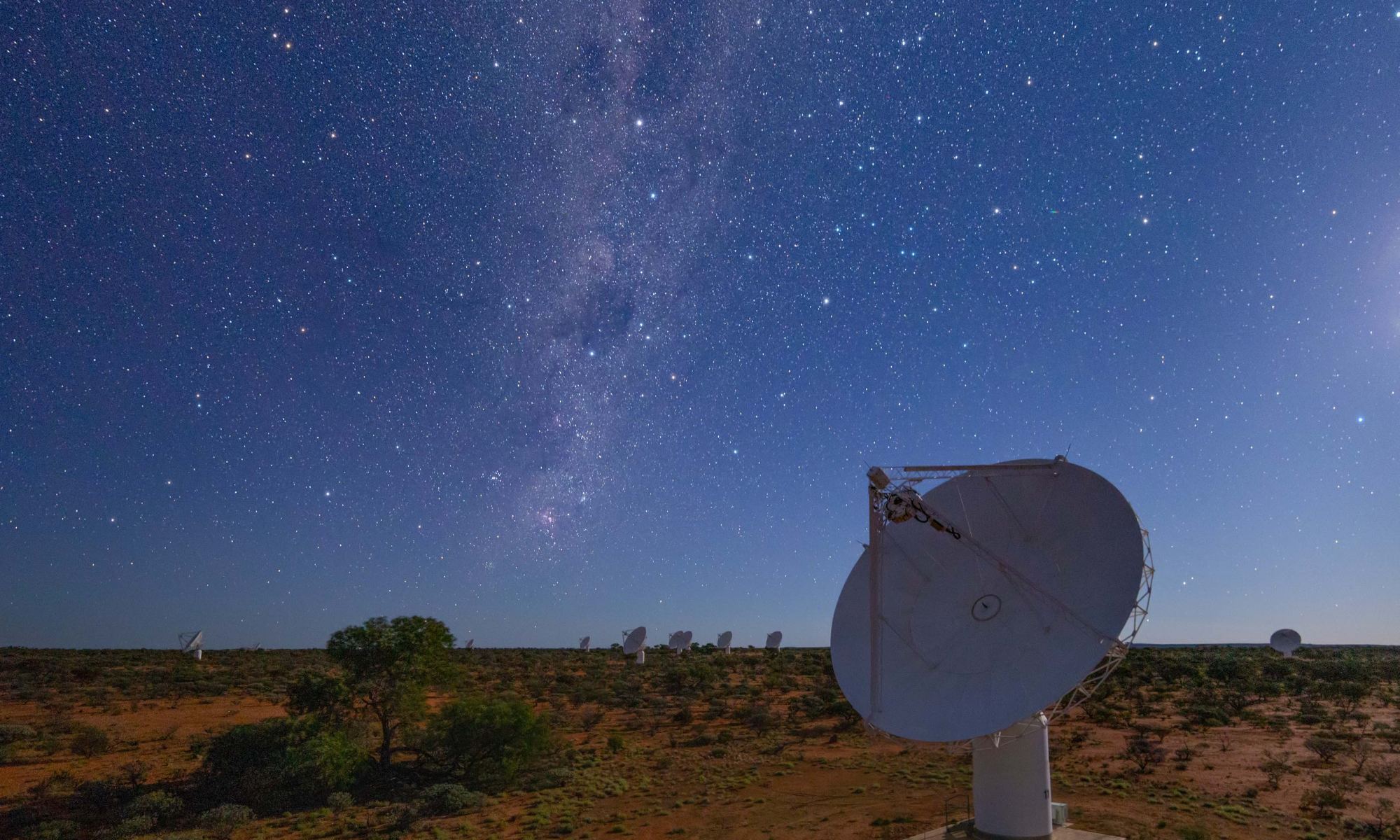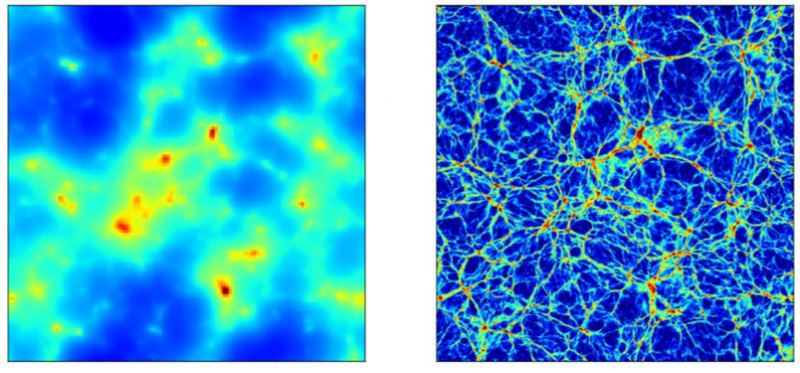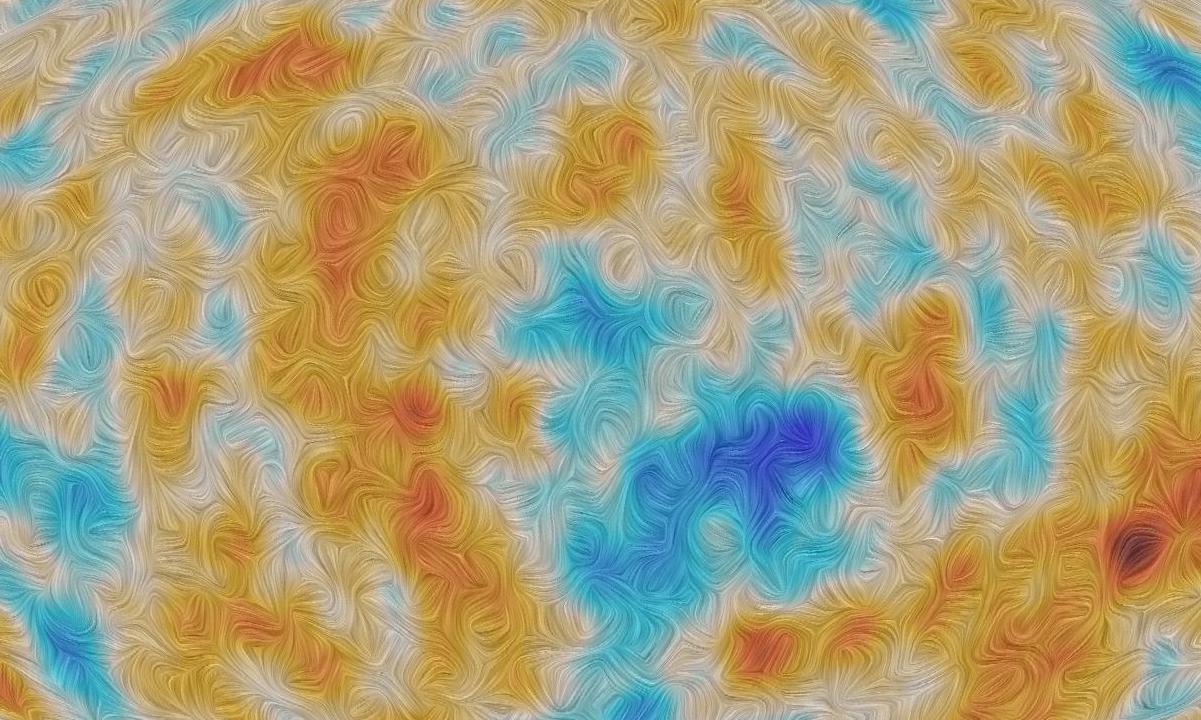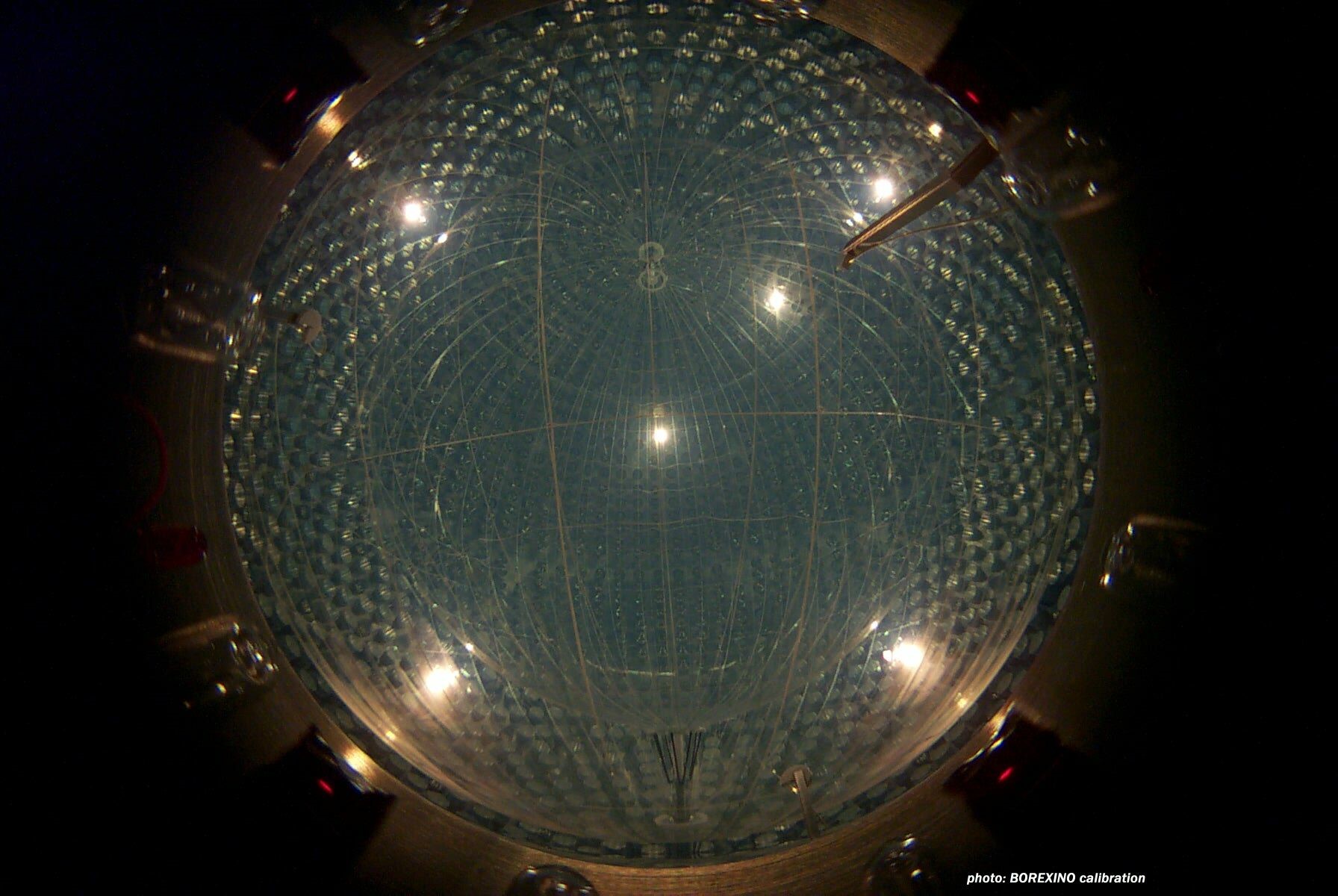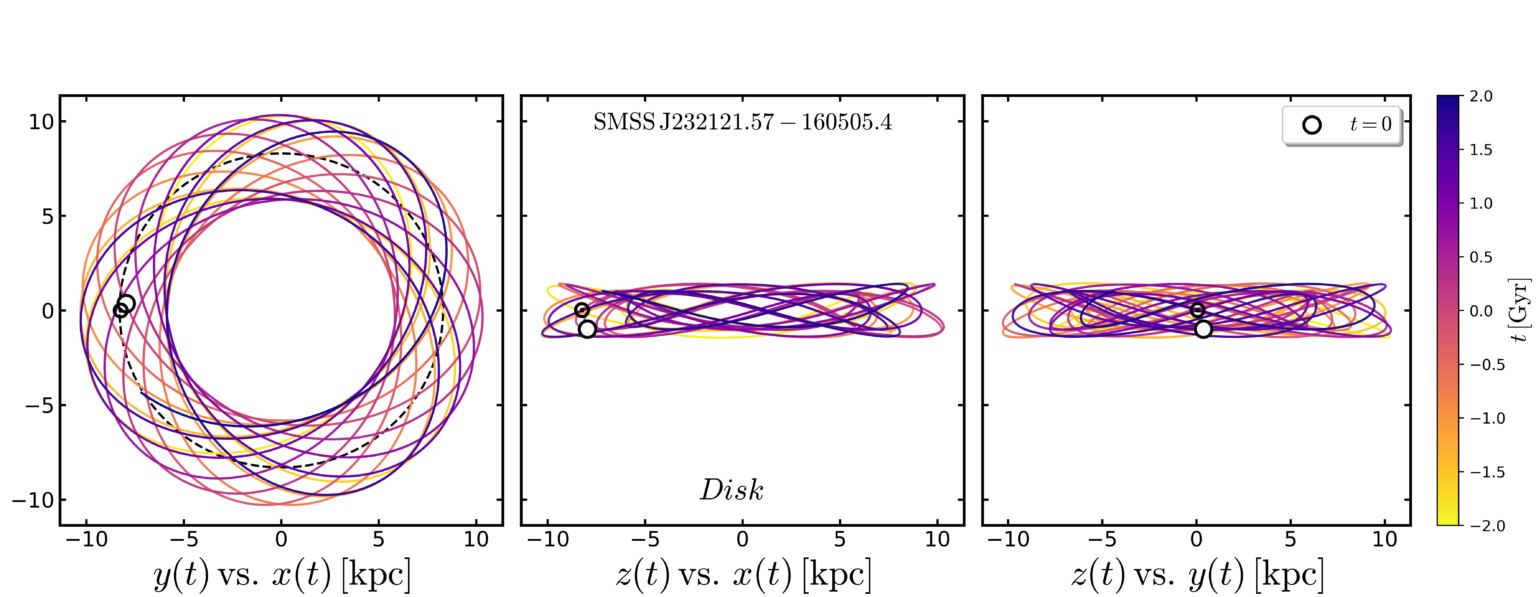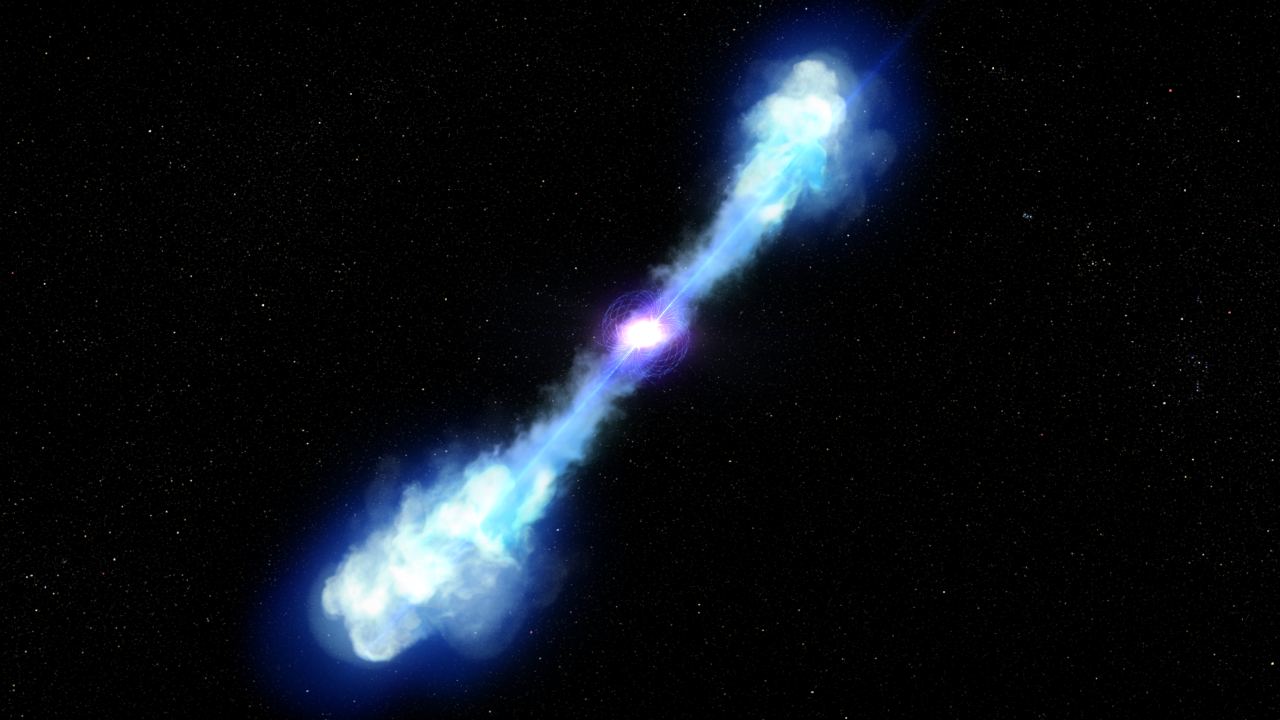Although radio astronomy has been around since the 1930s, it is only in recent years that astronomers have been able to make high-resolution maps of the radio sky. Sky maps are difficult for radio telescopes because radio antennas need to be focused on an extremely small patch of sky to capture images in high resolution. But with modern antennas and computer processing, we can now scan the sky quickly enough to map the heavens in a reasonable amount of time.
Continue reading “Australian Radio Telescopes Just Completed a map of the Universe”Neutrinos Have Played a Huge Role in the Evolution of the Universe
It’s often said that we haven’t yet detected dark matter particles. That isn’t quite true. We haven’t detected the particles that comprise cold dark matter, but we have detected neutrinos. Neutrinos have mass and don’t interact strongly with light, so they are a form of dark matter. While they don’t solve the mystery of dark matter, they do play a role in the shape and evolution of our universe.
Continue reading “Neutrinos Have Played a Huge Role in the Evolution of the Universe”A new measurement puts the Sun 2,000 light-years closer to the center of the Milky Way

Where are we? Cosmically, we’re in our home galaxy, typically known as the Milky Way. The center of our galaxy is marked by a supermassive black hole, which the Sun orbits at a distance of about 30,000 light-years. The official distance, set by the International Astronomical Union in 1985, is 27,700 light-years. But a new study as confirmed we are actually a bit closer to the black hole.
Continue reading “A new measurement puts the Sun 2,000 light-years closer to the center of the Milky Way”Polarized light from the cosmic background hints at new physics
The oldest light in the universe is that of the cosmic microwave background (CMB). This remnant glow from the big bang has traveled for more than 13 billion years. Along the way, it has picked up a few tales about the history and evolution of the cosmos. We just need to listen to what it has to say.
Continue reading “Polarized light from the cosmic background hints at new physics”Neutrinos prove the Sun is doing a second kind of fusion in its core
Like all stars, our Sun is powered by the fusion of hydrogen into heavier elements. Nuclear fusion is not only what makes stars shine, it is also a primary source of the chemical elements that make the world around us. Much of our understanding of stellar fusion comes from theoretical models of atomic nuclei, but for our closest star, we also have another source: neutrinos created in the Sun’s core.
Continue reading “Neutrinos prove the Sun is doing a second kind of fusion in its core”Solar astronomers can now predict future sunspots. There should be a big one in a couple of days
The surface of the Sun is a turbulent dance of gravity, plasma, and magnetic fields. Much like the weather on Earth, its behavior can seem unpredictable, but there are patterns to be found when you look closely.
Continue reading “Solar astronomers can now predict future sunspots. There should be a big one in a couple of days”Gravitational lenses could be the key to measuring the expansion rate of the Universe
One of the tenets of our cosmological model is that the universe is expanding. For reasons we still don’t fully understand, space itself is stretching over time. It’s a strange idea to wrap your head around, but the evidence for it is conclusive. It is not simply that galaxies appear to be moving away from us, as seen by their redshift. Distant galaxies also appear larger than they should due to cosmic expansion. They are also distributed in superclusters separated by large voids. Then there is the cosmic microwave background, where even its small fluctuations in temperature confirm cosmic expansion.
Continue reading “Gravitational lenses could be the key to measuring the expansion rate of the Universe”Some of the Milky Way’s oldest stars aren’t where they’re expected to be
One of the ways we categorize stars is by their metallicity. That is the fraction of heavier elements a star has compared to hydrogen and helium. It’s a useful metric because the metallicity of a star is a good measure of its age.
Continue reading “Some of the Milky Way’s oldest stars aren’t where they’re expected to be”Astronomers think they’ve seen a magnetar form for the first time; the collision of two neutron stars
A magnetar is a neutron star with a magnetic field thousands of times more powerful than those of typical neutron stars. Their fields are so strong that they can generate powerful, short-duration events such as soft gamma repeaters and fast radio bursts. While we have learned quite a bit about magnetars in recent years, we still don’t understand how neutron stars can form such intense magnetic fields. But that could soon change thanks to a new study.
Continue reading “Astronomers think they’ve seen a magnetar form for the first time; the collision of two neutron stars”Do neutron star collisions produce black holes?
In principle, creating a stellar-mass black hole is easy. Simply wait for a large star to reach the end of its life, and watch its core collapse under its own weight. If the core has more mass than 2 – 3 Suns, then it will become a black hole. Smaller than about 2.2 solar masses and it will become a neutron star. Smaller than 1.4 solar masses and it becomes a white dwarf.
Continue reading “Do neutron star collisions produce black holes?”
